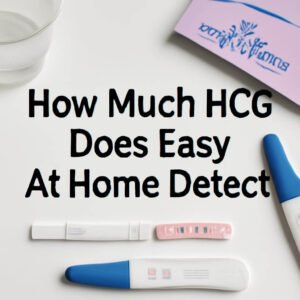When considering the health and well-being of an elderly loved one or someone needing ongoing medical support, many New Zealanders ask: how much does hospital-level rest home care cost in NZ? Understanding the costs involved in hospital-level care is crucial for planning and peace of mind. This ultimate guide will walk you through everything you need to know about pricing, funding, and finding the right care, helping you make an informed and confident decision.
Understanding Hospital-Level Rest Home Care
Hospital-level rest home care in New Zealand refers to care provided for individuals who require a high level of medical support and supervision, typically similar to that offered in a hospital setting. This type of care is often needed by those with complex medical needs, including chronic illnesses, post-surgical recovery, or ongoing rehabilitation.
Unlike standard rest home care, which focuses mostly on daily living assistance such as help with bathing, dressing, and meals, hospital-level care includes professional nursing services, medication management, and 24/7 monitoring by trained healthcare staff. This level of care ensures that residents receive appropriate treatment and a rapid response to any health changes.
Key Factors Influencing Hospital-Level Rest Home Care Costs
Several elements influence the cost of hospital-level rest home care in NZ. Understanding these factors will help you anticipate expenses and find the best options within your budget.
Level of Care Required
The intensity and type of medical support directly affect the cost. People needing complex nursing, frequent doctor visits, or specialized therapies will generally pay more than those with less demanding care requirements.
Location and Facility Type
Costs vary significantly depending on whether the rest home is located in a major city or a rural area. Urban facilities may charge higher fees due to demand and operational costs. Additionally, private rest homes often have higher prices than publicly funded ones but might offer more amenities or shorter waiting times.
Additional Services and Amenities
Some rest homes provide extra services such as physiotherapy, social activities, or private rooms, which can add to the overall price. It’s important to distinguish between basic care costs and optional extras when budgeting.
Typical Cost Range for Hospital Level Rest Home Care in NZ
Hospital level rest home care in New Zealand typically ranges between NZD 1,800 to NZD 3,500 per week depending on the facility and care level. Publicly funded rest homes generally offer more affordable options, sometimes subsidised by the government, while private facilities can push costs higher.
To put this into perspective:
| Type of Care Facility | Estimated Weekly Cost (NZD) | Notes |
|---|---|---|
| Publicly Funded Rest Home | 1,800 – 2,500 | Subsidized, may have waiting lists |
| Private Rest Home | 2,500 – 3,500+ | More amenities, faster access |
| Hospital Level Care Units | 3,000 – 3,500+ | High medical support, intensive nursing care |
Costs can fluctuate based on personal health needs and additional service uptake.
Government Funding and Subsidies for Rest Home Care
The New Zealand government provides funding to help eligible individuals cover rest home care costs. This financial assistance plays a vital role in making hospital-level care more accessible.
Eligibility Criteria for Subsidies
To qualify for government subsidies, applicants usually need to:
- Be assessed by a Needs Assessment and Service Coordination (NASC) agency.
- Meet age and residency requirements.
- Demonstrate a health condition that requires rest home level or higher care.
How to Apply for Financial Assistance
Applying for subsidies involves contacting your local NASC agency, undergoing a thorough health and social needs assessment, and completing necessary paperwork. The process may seem complex, but NASC agencies are available to guide families through it step by step.
Comparing Public vs Private Rest Home Care Costs
Choosing between public and private rest home care is often a balancing act between cost, quality, and availability.
| Factor | Public Rest Home Care | Private Rest Home Care |
|---|---|---|
| Cost | Lower, subsidized | Higher, out-of-pocket or insurance |
| Waiting Time | Can be long | Usually shorter |
| Facilities & Amenities | Basic | More extensive |
| Flexibility | Limited | Greater options for personalized care |
Many families prefer private options for faster access and enhanced comfort, but government funding can make public care a practical solution.
How to Budget for Hospital-Level Rest Home Care
Planning your finances around rest home care requires realistic budgeting and understanding of all potential expenses.
Tips for Budgeting
- Include ongoing weekly fees and potential one-off admission costs.
- Factor in transport, personal items, and additional services.
- Set aside contingency funds for unexpected medical needs or changes in care.
Insurance Options to Cover Rest Home Care Costs
Several insurance products may help manage hospital-level rest home care expenses:
- Health Insurance: Some plans cover long-term care or hospital stays.
- Accident Compensation Corporation (ACC): Can cover care costs if the need arises from an accident.
- Long-term Care Insurance: Less common but available through select providers.
It’s wise to review your policies and consider additional coverage options well before care is needed.
Impact of Care Level Changes on Cost Over Time
As health needs change, so will care requirements—and costs. Increasing care levels typically raise fees, while a reduction in medical needs can lower costs. Regular reassessments ensure that care plans and budgets stay aligned with actual needs.
Quality of Care vs Cost: Finding the Right Balance
While cost is an important factor, quality of care should never be compromised. Families are encouraged to evaluate:
- Staff qualifications and ratio.
- Resident satisfaction and reviews.
- Facility cleanliness and safety.
- Availability of medical and social support.
Finding a balance between affordability and excellent care is key to long-term well-being.
How to Choose the Best Rest Home for Hospital-Level Care
Choosing the right rest home means looking beyond price tags. Consider:
- Proximity to family and friends.
- Accreditation and compliance with health standards.
- Types of care offered and specialist services.
- Visiting policies and communication transparency.
Personal visits and consultations with care coordinators help make an informed choice.
Frequently Asked Questions (FAQs)
What is included in hospital-level care?
Hospital-level care includes 24/7 nursing, medication management, medical monitoring, rehabilitation therapies, and assistance with daily activities.
Can I get financial help if I can’t afford rest home care?
Yes, government subsidies are available for eligible individuals, and there are also charitable grants and insurance options.
How often are costs reviewed or changed?
Rest home fees are usually reviewed annually, but may change if care needs increase or government policies are updated.
Are there alternatives to hospital-level rest home care?
Alternatives include home-based care services, retirement villages with support, and hospice care for palliative needs.
How do I know if hospital-level care is needed?
A NASC assessment determines care level based on medical and daily living needs.
Can family members contribute to care or costs?
Family members often provide emotional and social support, and may contribute financially depending on individual arrangements.
Conclusion and Key Takeaways
Understanding how much hospital level rest home care costs NZ is vital for making the best decisions for your loved ones. While costs can be significant, government subsidies, insurance, and careful planning can ease the financial burden. Balancing quality care with affordability ensures safety, comfort, and dignity for those who need it most.













